Let’s assume that you have 30GB of movies and you have 3 drives each 20 GB in size. So how will you store?
Obviously you can split your videos in two or three different volumes and store them on the drive manually. This certainly is not a good idea, it is an exhaustive work which requires manual intervention and a lots of your time.
Another solution is to create a RAID array of disk. The RAID has always remained notorious for loss of storage reliability and usable disk space. Another solution is mhddfs.
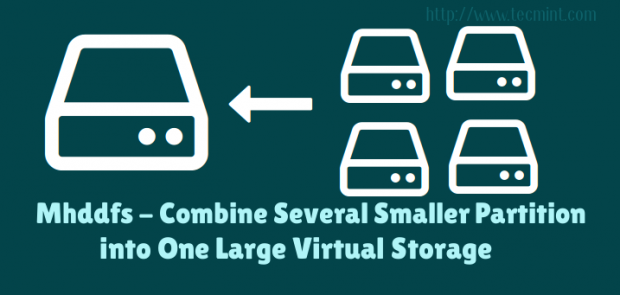
mhddfs is a driver for Linux that combines several mount points into one virtual disk. It is a fuse based driver, which provides a easy solution for large data storage. It combines all small file systems to create a single big virtual filesystem which contains every particle of its member filesystem including files and free spaces.
Why you need Mhddfs?
All your storage devices creates a single virtual pool and it can be mounted right at the boot. This small utility takes care of, which drive is full and which is empty and to write data to what drive, intelligently. Once you create virtual drives successfully, you can share your virtual filesystem using SAMBA. Your client will always see a huge drive and lots of free space.
Features of Mhddfs
- Get attributes of the file system and system information.
- Set attributes of the file system.
- Create, Read, Remove and write Directories and files.
- Support for file locks and Hardlinks on single device.
| Pros of mhddfs | Cons of mhddfs |
| Perfect for home users. | mhddfs driver is not built in the Linux Kernel |
| Simple to run. | Required lots of processing power during runtime |
| No evidence of Data loss | No redundancy solution. |
| Do not split the file. | Hardlinks moving not supported |
| Add new files to the combined virtual filesystem. | |
| Manage the location where these files are saved. | |
| Extended file attributes |
Installation of Mhddfs in Linux
On Debian and portable to alike systems, you can install mhddfs package using following command.
# apt-get update && apt-get install mhddfs
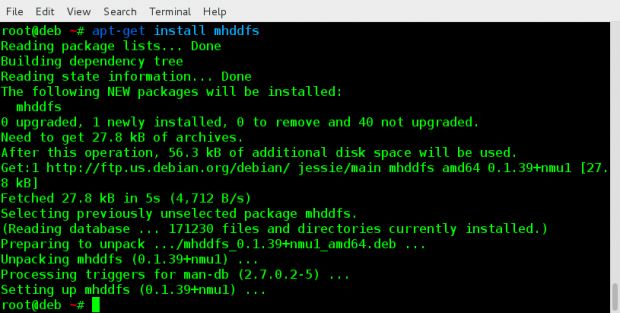
On RHEL/CentOS Linux systems, you need to turn on epel-repository and then execute the below command to install mhddfs package.
# yum install mhddfs
On Fedora 22+ systems, you may get it by dnf package manger as shown below.
# dnf install mhddfs
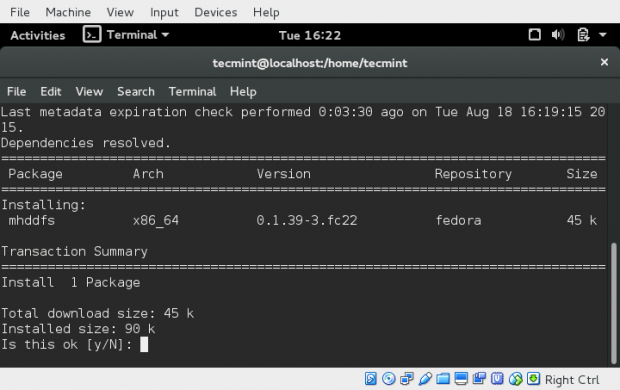
If incase, mhddfs package isn’t available from epel repository, then you need to resolve following dependencies to install and compile it from source as shown below.
- FUSE header files
- GCC
- libc6 header files
- uthash header files
- libattr1 header files (optional)
Next, download the latest source package simply as suggested below and compile it.
# wget http://mhddfs.uvw.ru/downloads/mhddfs_0.1.39.tar.gz # tar -zxvf mhddfs*.tar.gz # cd mhddfs-0.1.39/ # make
You should be able to see binary mhddfs in the current directory. Move it to /usr/bin/ and /usr/local/bin/ as root.
# cp mhddfs /usr/bin/ # cp mhddfs /usr/local/bin/
All set, mhddfs is ready to be used.
How do I use Mhddfs?
1. Lets see all the HDD mounted to my system currently.
$ df -h
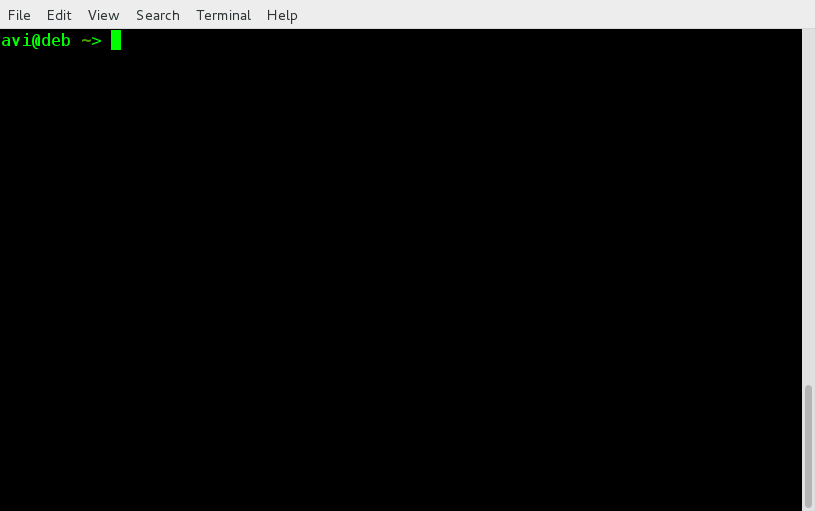
Sample Output
Filesystem Size Used Avail Use% Mounted on /dev/sda1 511M 132K 511M 1% /boot/efi /dev/sda2 451G 92G 336G 22% / /dev/sdb1 1.9T 161G 1.7T 9% /media/avi/BD9B-5FCE /dev/sdc1 555M 555M 0 100% /media/avi/Debian 8.1.0 M-A 1
Notice the ‘Mount Point‘ name here, which we will be using later.
2. Create a directory /mnt/virtual_hdd where all these all file system will be grouped together as,
# mkdir /mnt/virtual_hdd
3. And then mount all the file-systems. Either as root or as a user who is a member of FUSE group.
# mhddfs /boot/efi, /, /media/avi/BD9B-5FCE/, /media/avi/Debian\ 8.1.0\ M-A\ 1/ /mnt/virtual_hdd -o allow_other
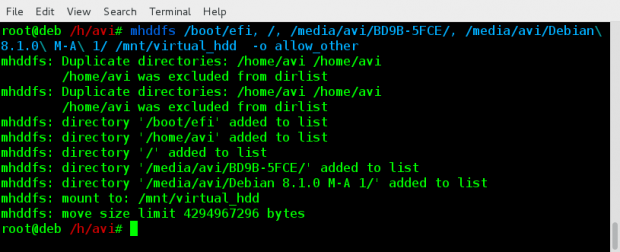
Note: We are used mount Point names here of all the HDDs. Obviously the mount point in your case will be different. Also notice “-o allow_other” option makes this Virtual file system visible to all others and not only the person who created it.
4. Now run “df -h” see all the filesystems. It should contain the one you created just now.
$ df -h
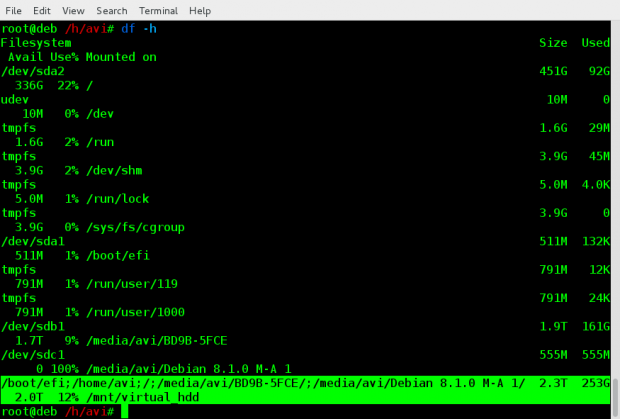
You can perform all the option to the Virtual File System you created as you would have done to a Mounted Drive.
5. To create this Virtual File system on every system boot, you should add the below line of code (in your case it should be different, depending upon your mount point), at the end of /etc/fstab file as root.
mhddfs# /boot/efi, /, /media/avi/BD9B-5FCE/, /media/avi/Debian\ 8.1.0\ M-A\ 1/ /mnt/virtual_hdd fuse defaults,allow_other 0 0
6. If at any point of time you want to add/remove a new drive to Virtual_hdd, you may mount a new drive, copy the contents of mount point /mnt/virtual_hdd, un-mount the volume, Eject the Drive you want to remove and/or mount the new drive you want to include, Mount the overall filesystem under Virtual_hdd using mhddfs command and you should be done.
How do I Un-Mount Virtual_hdd?
Unmounting virtual_hdd is as easy as,
# umount /mnt/virtual_hdd

Notice it is umount and not unmount. A lot of user type it wrong.
That’s all for now. I am working on another post you people will love to read. Till then stay tuned and connected to Tecmint. Provide us with your valuable feedback in the comments below. Like and share us and help us get spread.








If as you say that mhddfs “required lots of processing power during runtime”, would you suggest MergerFS? Of they both take a similar hit on overheads…
I don’t know maybe it is outdated but I’ve just lost control over VPS, because the /etc/fstab record present here is incorrectly formed.
It should not contain spaces separating folders in the beginning.
See man mhddfs for correct example.
MHDDFS has one GIGANTIC advantage over LVM or RAID-0: if you ever lose one of the disks, you’ll lose only the data that was on that disk, and not the whole data of the combined filesystem.
Considering this, mhddfs is the simplest solution for joining several disks/partitions/folders into one lógica volume.
Redundancy and backup should be considered as complement, of course.
What you want for this task is LVM2. It does what you describe for this fuse based filesystem, with the added advantage that the LVM2 device is a true combination of the underlying devices. So a single big file, larger than any single disk, but smaller than the sum of the small disks, will still fit.
I’m afraid your “elaboration” on choosing MhddFs over LVM hasn’t helped at all. Both LVM and Mhddfs “combine … storage pools”. One does it below the level of the filesystem, the other does it above. That does nothing to suggest why I should choose MHDDFS. Mhddfs is, no doubt, simpler to use — but the overhead! Dismissing that with a single short line in the “Cons” column seems to be a disservice. Not even mentioning LVM in such an article is a bigger one.
My want to check out mergerfs. It’s similar to mhddfs but actively maintained and has more features.
@Trapexit,
Thanks for updating about mergerfs tool, we will try to write a article on this tool soon..
Excellent article :)
Hi,
Could you elaborate on how this compares to LVM ?
Thanks forehand
LVM is a always be preferred way but it allows us to combine disparate storage pools together, where as Mhddfs is a highly recommended as it’s FUSE based file system that allows us to join or combine several partitions into one large single virtual filesystem mount point as explained in this article.
> that allows us to join or combine several partitions
LVM2 also allows the joining or combining of several partitions into a single large device. LVM2 will use a partition, or the whole disk, depending on what you tell it to do. There is zero reason to use this fuse system (and incur the fuse overhead) when LVM2 already does everything it does, better.
I don’t know that I had ever heard anyone say that “RAID has always remained notorious for loss of storage reliability.” I thought improving reliability was one of the reasons for using RAID. I understand that uses more disk space for a quantity of data. Actually, I’m not certain I understand why you brought it up at all.
For that matter, you’re going to have to transfer the files to the other disks somehow, so your computer will be doing that work and taking at least the time to transfer. I don’t see that it’s going to save a lot of time and energy over just to picking a number of files and copying them to one of the new disks, going to lunch, picking another group and copying, etc. I don’t know why you think “This certainly is not a good idea…”
Having said that, the MHDDFS looks like an interesting solution to the original problem you posed. It particularly has the advantage that you don’t have to know where on the three disks a particular file was saved, assuming you use 60GB of storage to store 30GB of files. You have only one disk directory/catalog to search. In fact, that may be the big advantage I see with the system.
> I don’t know that I had ever heard anyone say that “RAID has always remained notorious for loss of storage reliability.” I thought improving reliability was one of the reasons for using RAID.
That is the very reason to use RAID. This statement should be a tip-off to everyone that the author likely does not know what he is talking about, and the remainder of the suggestions for using this mhddfs fuse filesystem should be considered suspect.
Well that depends on the type of your RAID.
RAID0 will stripe all the data over the drives, so if any of them fails, the whole virtual drive will be ruined, and you have no chance to get your data back. So the risk increases with every disk in the array.
RAID1 will give you a better availability, since it mirrors the data on two disks. If one fails, the other one will still be OK and hold the data.